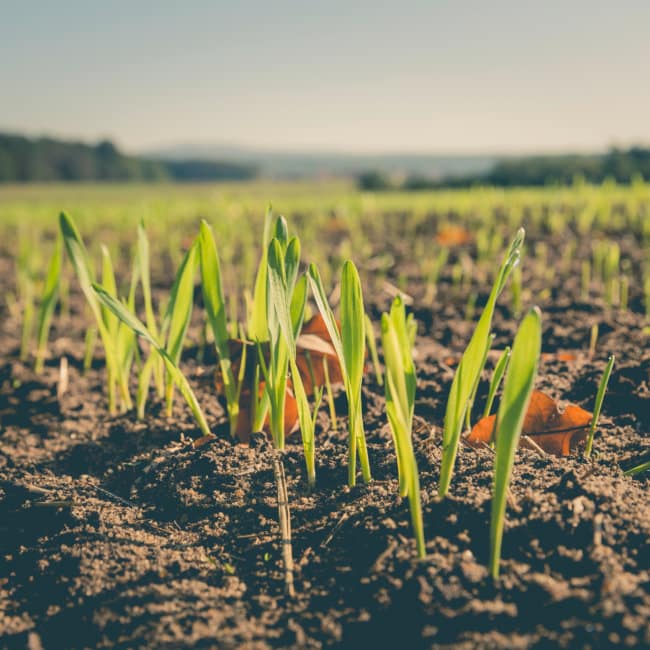All the media are talking about it, many have tried it but this alternative source of protein is not really part of our daily diet yet. Do you want to better understand all the stakes about insect proteins?
Last month, Innovafeed and Auchan launched the first insect-fed trout on its stalls. This is a first, both in the animal nutrition field and in terms of product offer for the consumer.
These past few years, insects have become very popular both in the business world and among consumers, who often describe these foods as « the protein of the future ». How can this new phenomenon be decrypted? Is everything we are told true? Let’s raise some preconceived ideas to help you understand this new market.
A source of protein
Are insects really a high source of protein?
There is indeed about 70% protein in insect flour, but you have to compare what is comparable. Alive, insects contain about 60% water, 20% protein, 10% fat and the rest in carbohydrates and others. Just like a large majority of living beings after all.
To obtain flour, the insect is dried and then pressed to remove water and fat. This is how this effectively high protein level is obtained. If you removed all the water from the meat, the protein levels would be even better.
Insect breeding: low water consumption, good for the environment and non-polluting?
Not as much as we think!
[wcm_nonmember]
This article is premium. To read more, sign in if you have an account. Otherwise, discover our premium offer.
[/wcm_nonmember]
[wcm_restrict]
Like all animals, insects consume both water and food. For the breeding of the mealworm, for example, the diet is essentially based on wheat bran (cereal co-product).
When we look at the figures of the water needed to produce one kilogram of meat, the water needed to produce their food is almost always included in the calculation. For beef, for example, the figure of 15,000 litres of water consumed to produce 1 kg of meat is very common, whereas the scientific community considers that it takes between 550 and 700 litres. For the insect, the consideration of water needed for their food is almost never integrated. This is why the difference in needs seems to be so huge.
Also, insects grow in a humid and warm environment. A temperature of about 25-30°C is necessary for their growth to be optimal. However, in temperate countries, as it is in Europe, it is necessary to heat livestock areas for a large part of the year, which is not the case for other types of livestock. Heating represents a significant energy consumption.
At what price do we consume insects?
For human consumption, the sales prices displayed in stores are prohibitive. Far too high for consumers to consider including the insect in their daily menu. For example, flavoured insects for aperitifs cost between 400 and 1000€ per kg.
In contrast, in the animal feed sector, insect meal is supposed to be the future substitute for fishmeal. However, this source of highly controversial protein can be purchased on international markets at prices of about $1200/tonne (1,2€/kg). These price levels are unattainable for some types of insects. For mealworm, for example, just the purchase price of the food needed to feed the insect is well above the expected selling price. There is therefore a significant gap between production costs and selling prices announced by the industry’s manufacturers.
It will therefore take time for the players in the insect sector to be able to produce at low cost and thus offer a real offer adapted to human and animal consumption.
Do we have the right to market insects in France?
Novel Food? Sanitary approval? Marketing authorization?
Since January 2018, insects have been classified as a « Novel Food« , european legislation governing the consumption of new foodstuffs. It is therefore possible for industrials to market insects for human consumption but under certain conditions. Companies must obtain a health approval, file an application with the authorities concerned, wait for the verdict to finally obtain a marketing authorization. This process takes between 7 and 17 months and can be expensive.
Have you heard of insect faeces?
Faeces are the excreta produced by insects. For 1 kg of live insects (300g of insect flour), it is around 3.5 kg of excreta. What do we do with those organic materials?
The market for chemical and organic fertilizers is already well supplied. To valorise an organic fertilizer, the price is linked with the level of NPK. The rate of mealworm faeces, for example, is 2-3-2 which is very low compared to lots of others. The advantage is that it is a very dry material compared to other organic materials such as animal manure. Is that enough to make the price high?
When we analyze the volumes produced in the insect sector, the question of the valuation of this co-product is very important to consider for a profitable model.
Conclusion
The picture is obviously not all dark as far as the insect sector is concerned. This is a great opportunity to make protein by reducing environmental impacts. It is a sector that must be built entirely, and which can complete a global protein offer. It is utopian to think that insect meal will completely replace meat products, but it is a new offer with great potential and that we must succeed in developing such as vegetable protein does.
Challenges are there but they are not insurmountable.
[/wcm_restrict]











